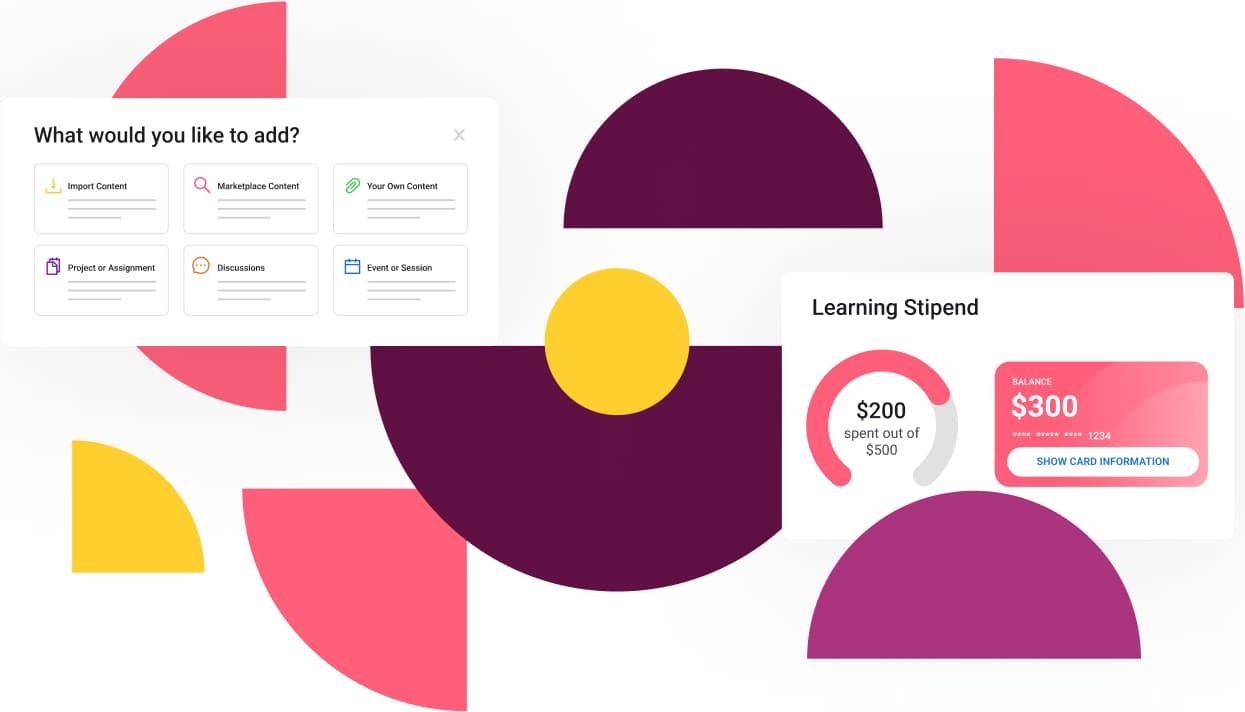Calculating the ROI of Upskilling
There are two key lenses for articulating and measuring the ROI of an upskilling intervention. The first lens brings focus to the difference in costs between hiring someone externally against the costs of training someone internally. The second lens focuses on the economic benefits upskilling interventions have on employee retention.
In 2019, large companies in the US allocated an average of $17.7 million to their training budget, midsize companies allocated $1.7 million, and small companies allocated $367,500 (2019 Training Industry Report). Were these investments worth it?
Well, it’s hard to tell. Many organizations still rely on traditional impact metrics such as learning-program satisfaction and completion scores, instead of outcomes-based metrics. As Steve Galevski pointed out in his article, Where Companies Go Wrong with Learning and Development, many L&D investments get trapped in easy to measure metrics, such as the number of employees earning continuous professional education (CPE) credits, instead of focusing on the true business impact of these investments.
In order to quantify the value of L&D initiatives, we must first set expectations about returns and define the value of particular forms of talent development. In this blog we will focus on one type of L&D investment: upskilling interventions. Upskilling interventions target workers who are doing well in their current position, but who need additional training to remain relevant or to advance within their company/industry. Think of upskilling a traditional marketer through digital marketing courses, or teaching an engineer a new coding language via a coding bootcamp.
In this blog post we will do a deep-dive into two lenses for articulating and measuring return on investment (ROI) of an upskilling intervention:
Hiring vs. Upskilling
For any particular role, the ROI of upskilling is often driven by the difference in costs between hiring someone externally against the costs of training someone internally.
Costs of Hiring Externally
The three key drivers of hiring costs are:
- Recruiting costs: You can estimate recruiting costs by looking at the new hire’s yearly wage and multiplying it by the average recruitment fee for that profession (agencies typically calculate fees based on a percentage of the new hire’s first-year wages).
- Cost-of-vacancy: Cost-of-vacancy refers to the difference between payroll & benefits savings and the revenue lost to a vacant role.
- Onboarding costs: Onboarding costs include the monetary equivalent for manager time and employee time spent onboarding.
The current economy has created a bidding war between companies for people with critical skills — such as data scientists and software engineers. This has driven up wages for employees with these coveted skills. Additionally, recruitment fees, the time to fill those roles and turnover rate have all increased as well. As a result, for certain key professions, costs of hiring externally are off the charts compared to the costs of upskilling internally.
Costs of Upskilling Internally

Upskilling includes the following major costs:
- Employer paid bootcamp tuition: This is the percentage of the bootcamp costs paid by the employer.
- Learning time off: You can estimate the cost to the employer of offering on-the-job training by multiplying the employee’s hourly salary by the total number of hours they’ve spent learning instead of working.
- Replacement costs: In certain cases, employers must find a replacement for the employee being upskilled. Strategic upskilling interventions ensure that the role replaced has lower recruitment fees & onboarding costs than the role being upskilled.
If the costs of hiring externally outweigh the costs of upskilling internally, then companies should build talent instead of buying talent. Research by Deloitte shows that this is indeed the case as a rising number of companies lean toward training instead of hiring (2019 Global Human Capital Trends).
Retention
The ROI of an upskilling intervention is also heavily influenced by its impact on employee retention. The costs of employee turnover are significant. A 2019 Gallup poll found that every year U.S. companies lose a trillion dollars due to voluntary turnover. By offering upskilling opportunities, companies can reduce their employee turnover ratio to a healthier level.
These are some of the key variables to look into when evaluating the retention benefits of offering upskilling interventions to your employees:
- Calculate your company’s voluntary employee turn-over ratio

To calculate your team or your organization’s monthly turnover ratio, you divide the number of voluntary resignations by the average number of employees (½ times the sum of the number of employees at the start of the month and the number of employees at the end of the month). You can compare these values to U.S. turnover rates based on industry and location.
- Calculate the expected turn-over cost (with and without upskilling-as-a-benefit)
Companies can use their monthly turnover ratio, together with their hiring costs, to calculate the cost of employee turnover. Using industry data, Learn In’s upskilling platform helps companies calculate their expected turnover savings from offering upskilling-as-a-benefit.
The COVID-19 pandemic has triggered unequal shifts in the labor market — with some sectors facing mass layoffs and others still desperate for talent. As the labor market transforms towards automation at a faster rate than expected, it is imperative for businesses to develop strategic upskilling interventions and proactively prepare for the future of work.
Learn In’s upskilling platform helps companies chart different ways of allocating time and money to their upskilling interventions, and calculates the expected ROI based on both internal company data and industry standards.
